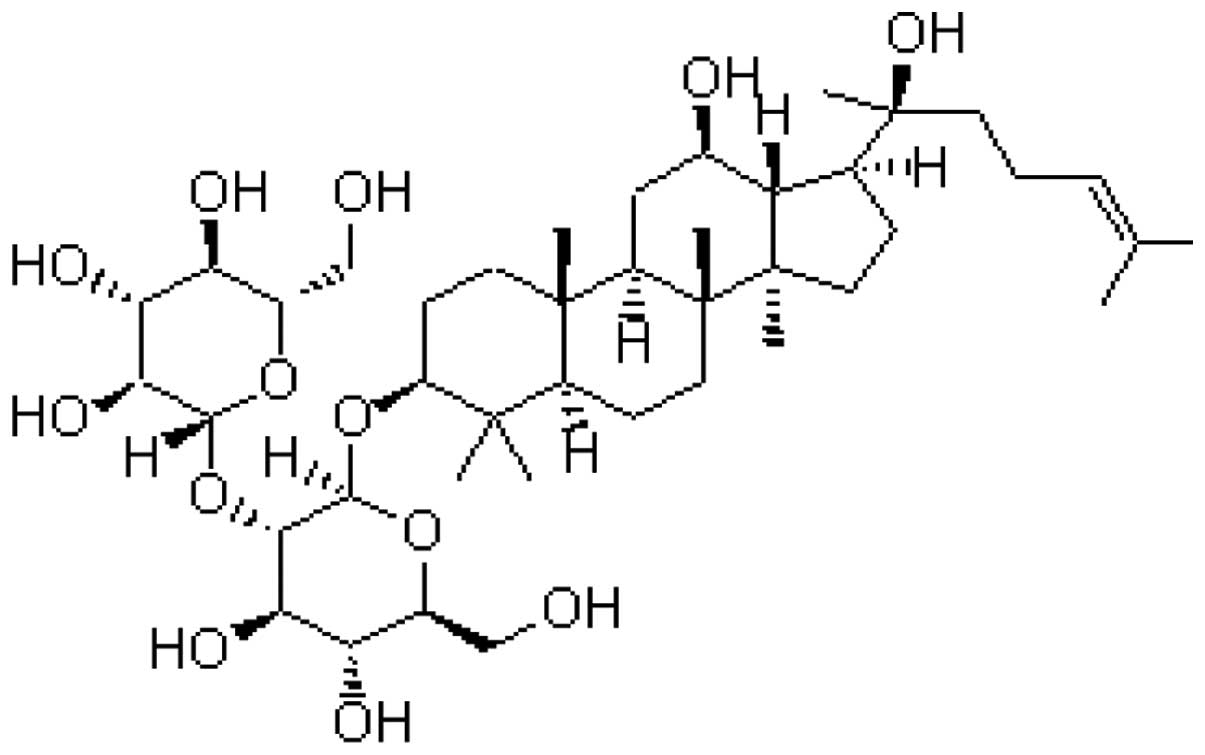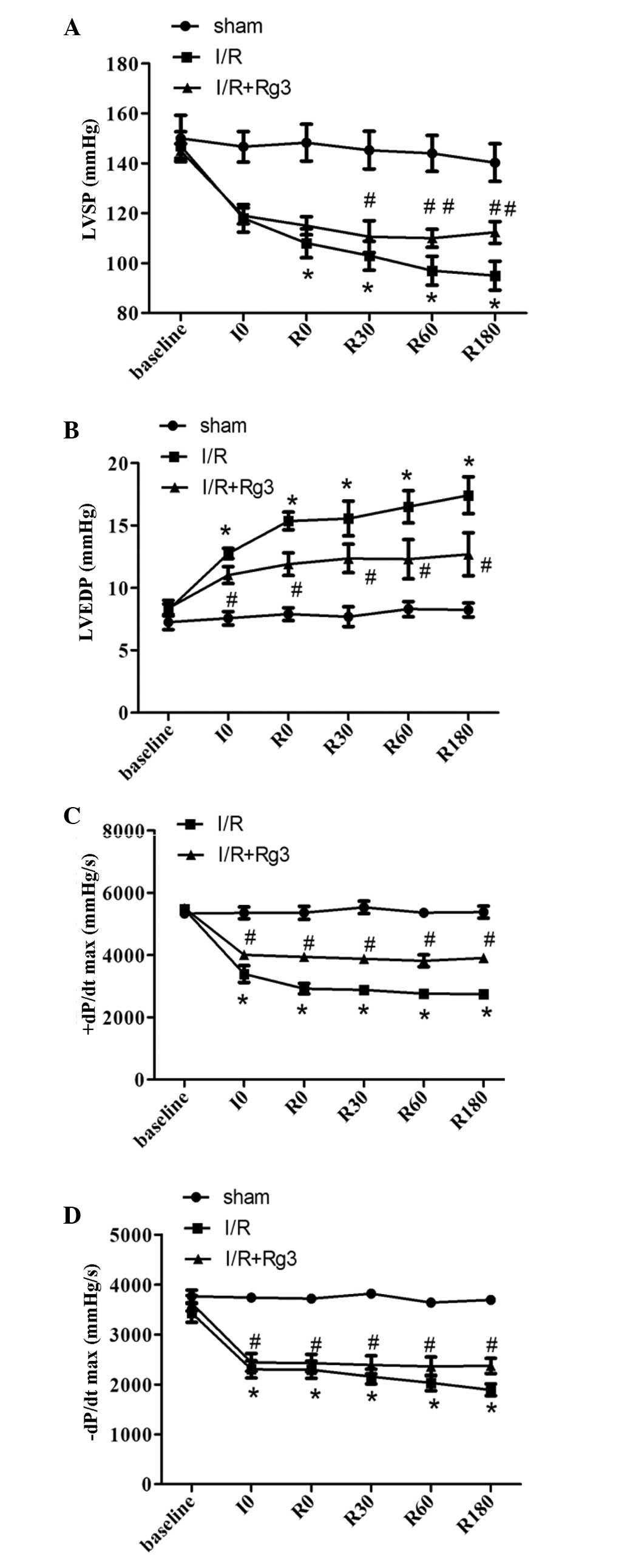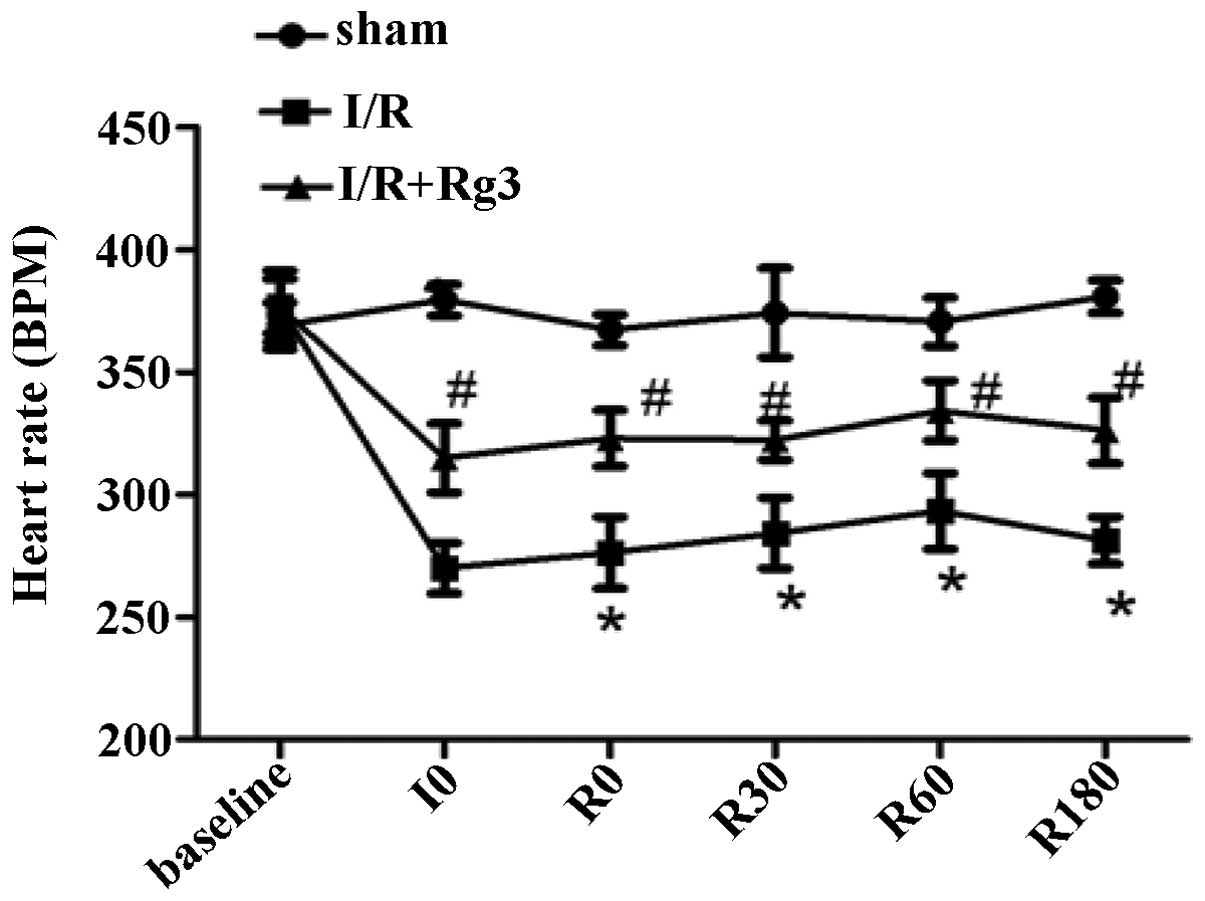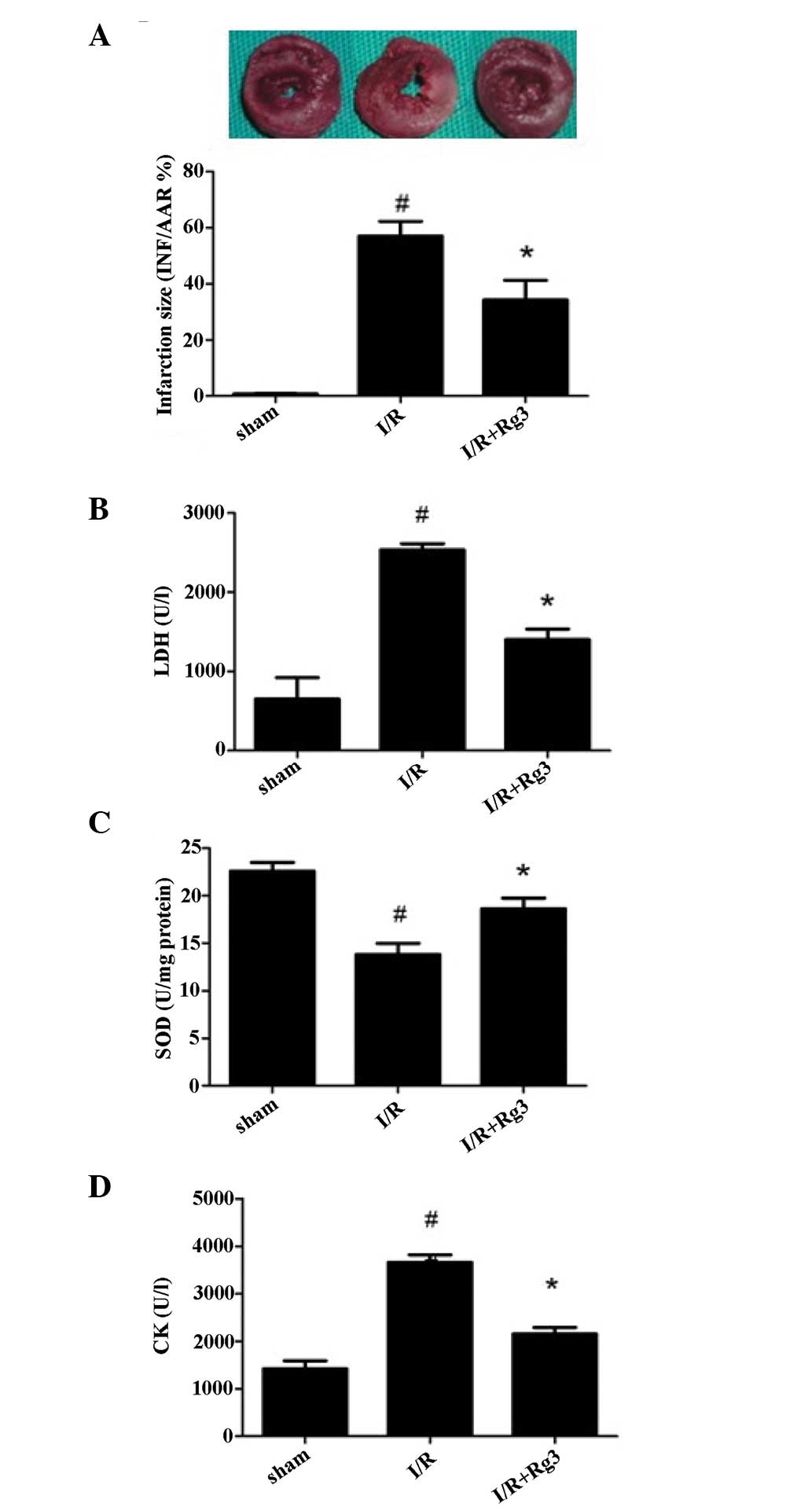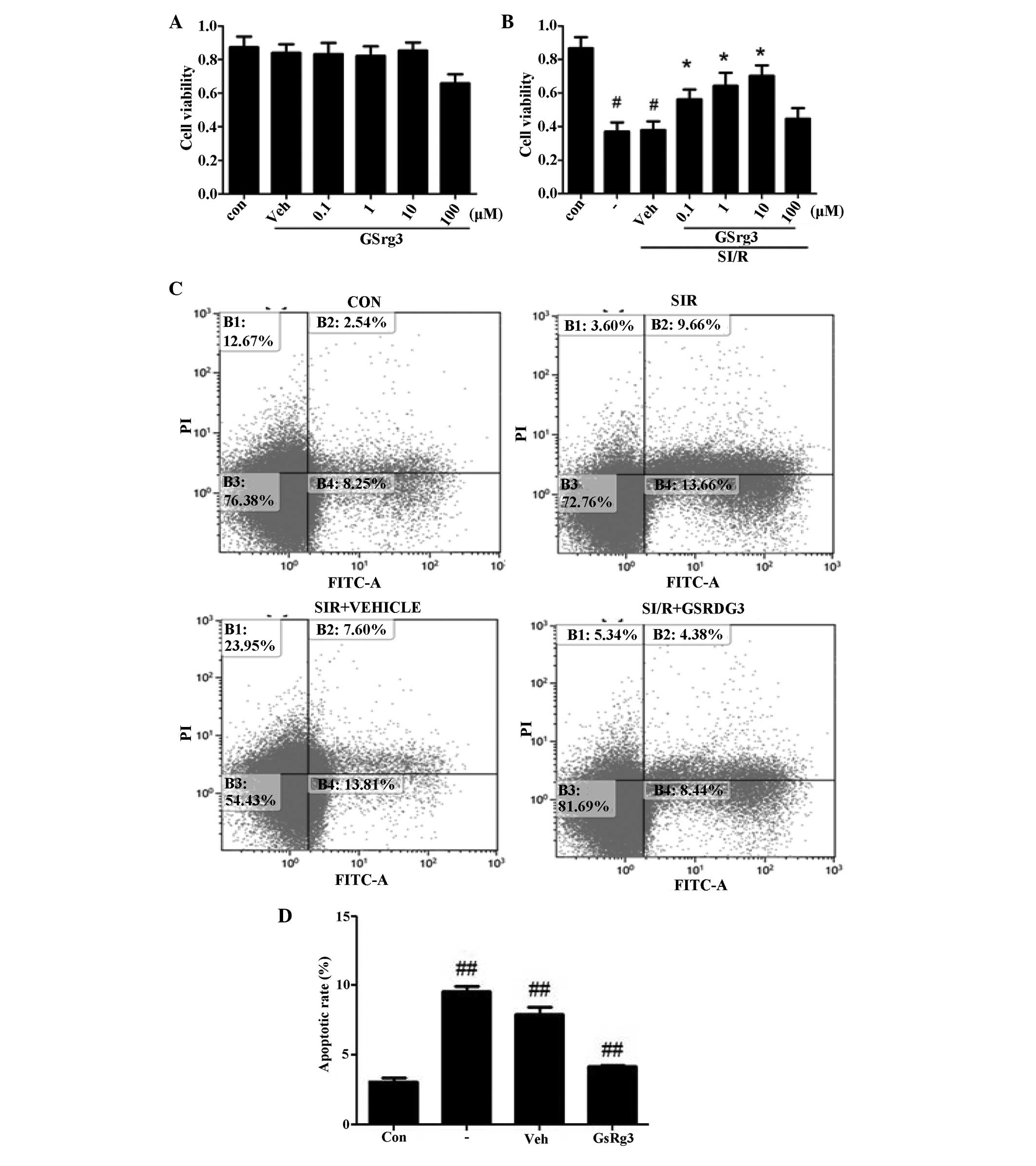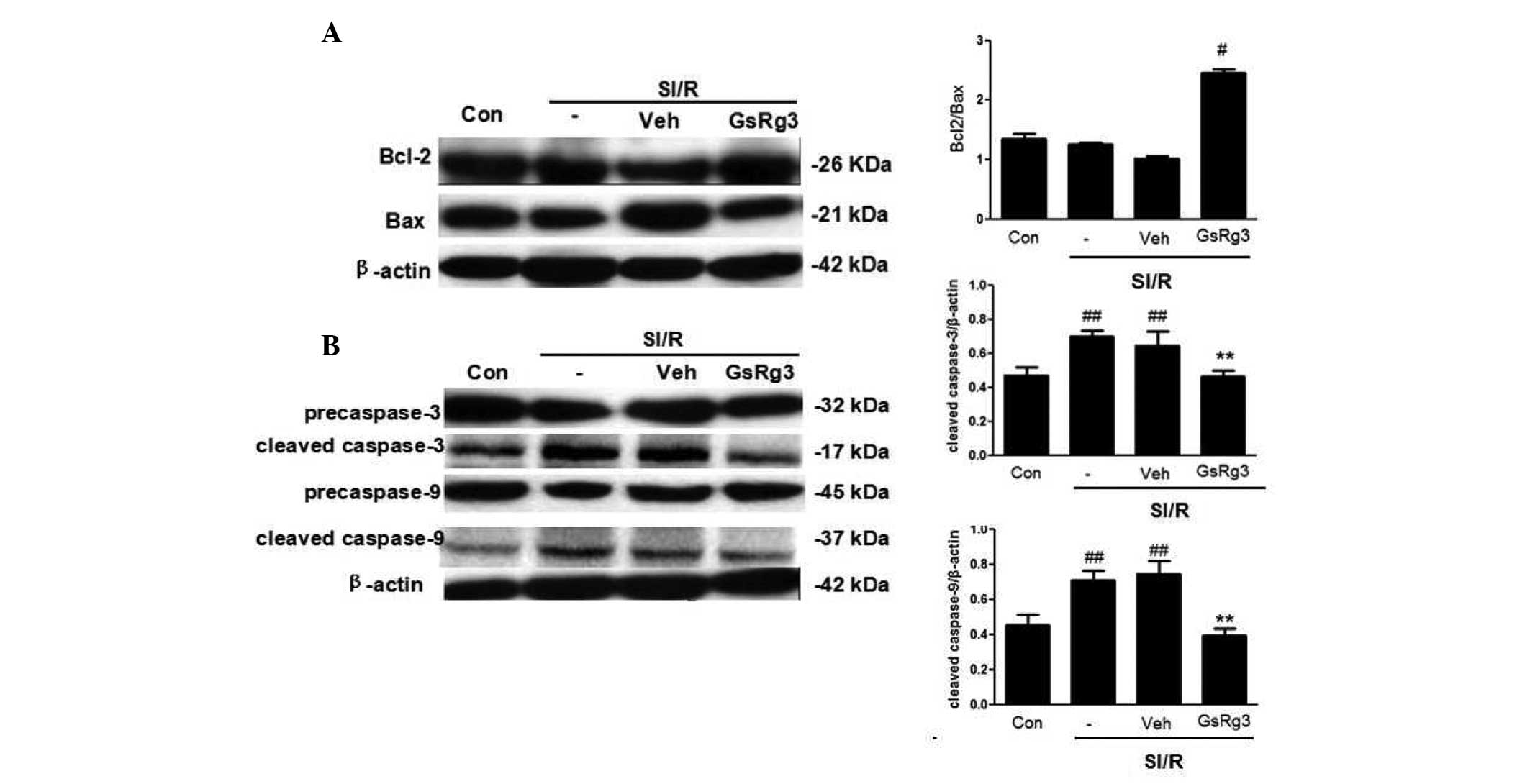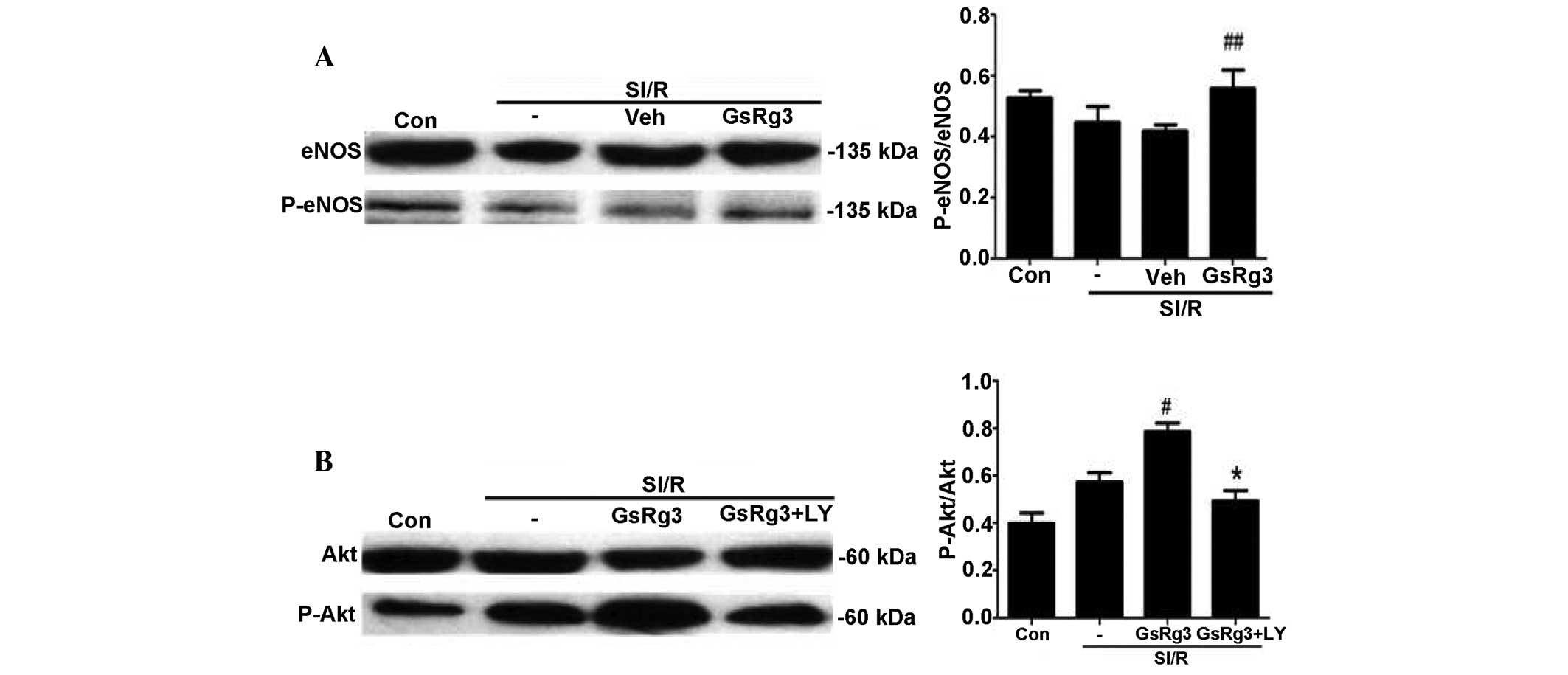Ginsenoside Rg3 attenuates myocardial ischemia/reperfusion injury via Akt/endothelial nitric oxide synthase signaling and the B‑cell lymphoma/B‑cell lymphoma‑associated X protein pathway
- Authors:
- Published online on: February 11, 2015 https://doi.org/10.3892/mmr.2015.3336
- Pages: 4518-4524
Metrics: Total
Views: 0 (Spandidos Publications: | PMC Statistics: )
Total PDF Downloads: 0 (Spandidos Publications: | PMC Statistics: )
Abstract
Previous studies have suggested that ginsenoside Rg3 (GSRg3) extract from the medicinal plant Panax ginseng, may increase nitric oxide production via increases in the phosphorylation and expression of endothelial nitric oxide synthase (eNOS). The present study used an in vitro neonatal rat cardiomyocyte (NRC) model of anoxia‑reoxygenation injury and an in vivo rat model of myocardial ischemia/reperfusion (MI/R) injury. Hemodynamic, histopathological and biochemical assessment of the myocardial injury was performed and the expression levels of lactate dehydrogenase (LDH), superoxide dismutase and creatine kinase (CK) were measured in serum from the animal model, which may reflect myocardial injury. NRC injury was determined using a Cell Counting kit‑8. The GSRg3 anti‑apoptotic effects were assessed using flow cytometry to investigate the number of early‑late apoptotic cells and western blot analysis was performed to analyze the protein expression levels of caspase‑3, caspase‑9, B‑cell lymphoma‑2 (Bcl‑2), phosphorylated (p‑)Akt and eNOS. The results suggested that pretreatment with GSRg3 (60 mg/kg) significantly improved rat cardiac function, as demonstrated by increased left ventricular systolic pressure, heart rate and first derivative of left ventricular pressure. GSRg3 also reduced the size of the myocardial infarct and LDH/CK levels in the blood following MI/R. In vitro investigations revealed that GSRg3 (10 mM) decreased NRC apoptosis through inhibiting the activation of caspase‑3 and caspase‑9, and increasing the expression levels of p‑Akt, eNOS and the ratio of Bcl‑2/Bcl‑2‑associated X protein (Bax). Overall, the present study revealed that GSRg3 mediated a cardioprotective effect against MI/R‑induced apoptosis via Akt/eNOS signaling and the Bcl‑2/Bax pathway.



